No.4 Cycling in Shimonoseki ~Enjoy Food and History~
2022/03/22
Shooting date:2021/10/03(Sun)Author: Yamaguchi University, Faculty of Global and Science Studies students
Hello! We are students at the Faculty of Global Science Studies at Yamaguchi University.
We are cooperating with the Sports Field Yamaguchi Promotion Council to spread the attractions of Yamaguchi Prefecture to foreigners.
As part of this project, we are uploading videos of cycling in various areas of Yamaguchi Prefecture, and more detailed and useful information that is not included in the videos will be provided through web articles.
The video is here ↓
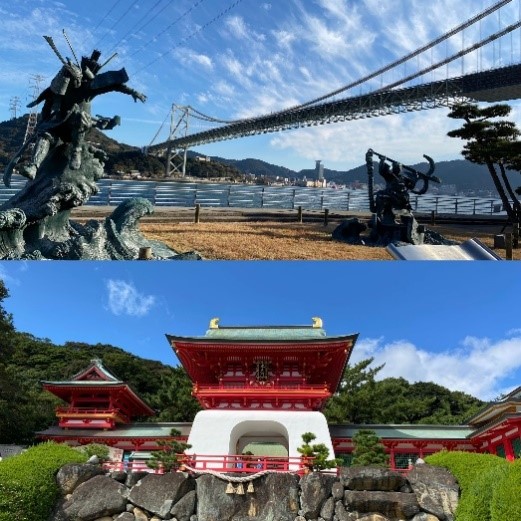
This time, we cycled in Shimonoseki City, located in the westernmost part of Honshu, Japan’s main island. The city has mild weather with little difference in temperature throughout the year, making it possible to enjoy sightseeing in any season. Shimonoseki is also a very convenient city for transportation. Shinkansen and expressways run through the city; it is easily accessible from the Kyushu and Kansai regions.
We started from Shimonoseki station, the center of Shimonoseki City.
The following is how to get to the station, the starting point for this tour ↓
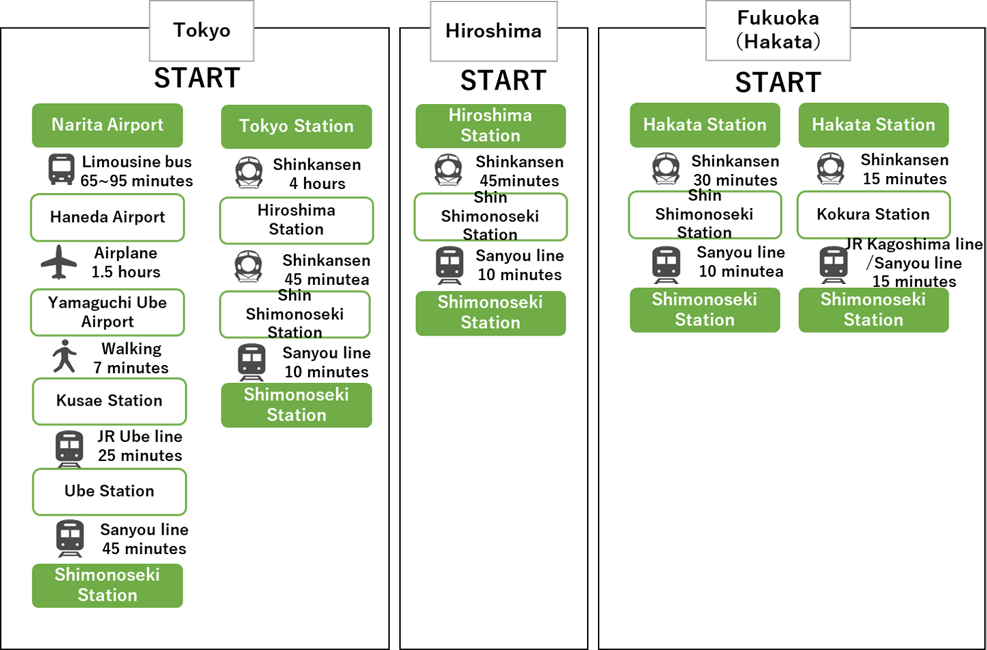
On this day, we rented bicycles at the Shimonoseki Ekikita cycle parking lot and took the 4.4km route. The foreigner who accompanied us was Jessica. She is an international student who came to Yamaguchi Prefecture from Hawaii in the fall of 2021. This was her second visit to Shimonoseki City.
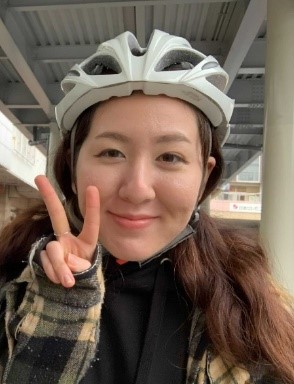
The best thing about this cycling course is that you can visit the famous tourist spots in downtown Shimonoseki in one day. Shimonoseki City has a lot of traffic, so cycling is the perfect way to move.
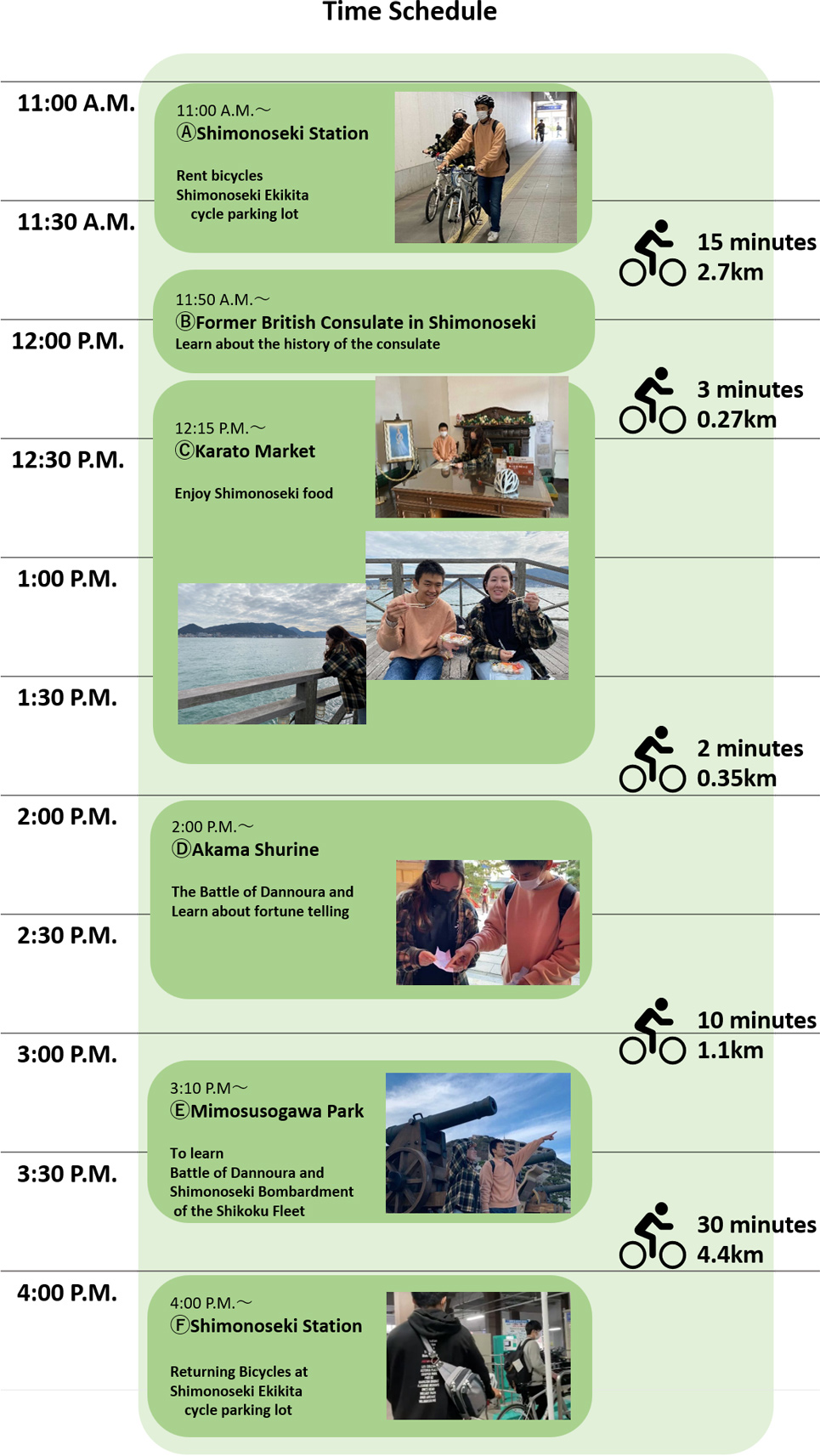
Google map cycle route is here ↓
Ⓐ『Shimonoseki Station』

Shimonoseki Ekikita cycle parking lot, where you can rent a bicycle, is located inside Shimonoseki Station. It looks like an ordinary cycle parking lot, so you may be wondering if they rent out bikes, but don’t worry. Please don’t hesitate to come in.
You can fill out the application form in Japanese only. Therefore, you will need a basic level of Japanese communication or a Japanese speaking friend.
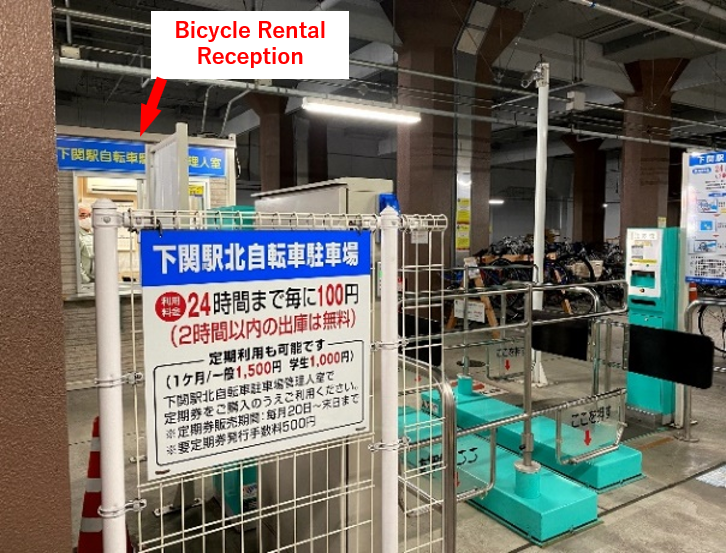
-How to rent a bicycle-
- Call in advance to make a reservation.
- Go to The manager’s office of Shimonoseki Station cycle parking lot.
- Fill out the application form.
- Show your ID card (representative only)
- Pay the fee (cash only).
- Ask the janitor to take you to cycle parking lot.
- Complete the application.
rented these bicycles!

By the way, do you know minivelo? The minivelo has small tires, which makes it easy to move. It is perfect for sightseeing in the city. You can also rent other bicycles, so why not go sightseeing with the bike that suits you best?
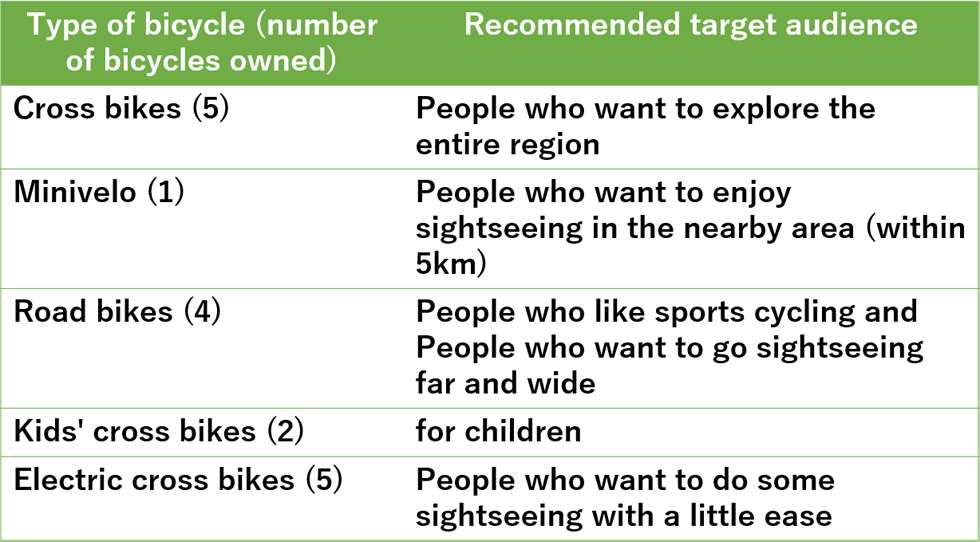
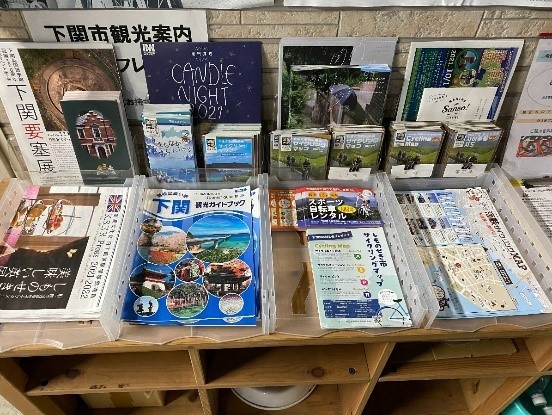
Next to the manager’s Shimonoseki Station cycle parking lot office, there are pamphlets about Shimonoseki City.
You’ll find many pamphlets and cycling maps with detailed information about each spot.
| Shimonoseki Ekikita cycle parking lot(Shimonoseki Station) | |
|---|---|
| Rental Fee | 600 yen($6) /day(Bicycle keys and helmets can be borrowed for free.) |
| Bicycle rental time | 7:00 A.M.-7:00 P.M.(reception until 6:30 P.M.) |
| Phone number | 083-242-0099 |
| Official HP | http://shimonoseki-churin.com/ |
| Holidays | No holidays |
Get your pamphlet, and let’s go!
※Don’t look at it while riding your bike.※
Ⓑ『Former British Consulate in Shimonoseki』
First, we went to the former British Consulate.
Western Japan achieved remarkable development in the latter half of the Meiji era (around 1900). Shimonoseki became the center of diplomacy, economy, and transportation, and in 1901, the British Consulate was established in the city. In 1906, the building shown in the photo on the right was built. It is the oldest remaining consulate building in Japan and is designated as an Important Cultural Property of Japan.
The red-brick building has a very British feel to it.
I especially recommend the Consular Room in the facility. You can sit in the chair and feel like a consular officer.

There are also touch panels and tablet terminals where you can learn about the history of the place. The tablet devices and the pamphlets placed here are available in English, too.
Jessica said, “I’m glad they put English pamphlets here.”
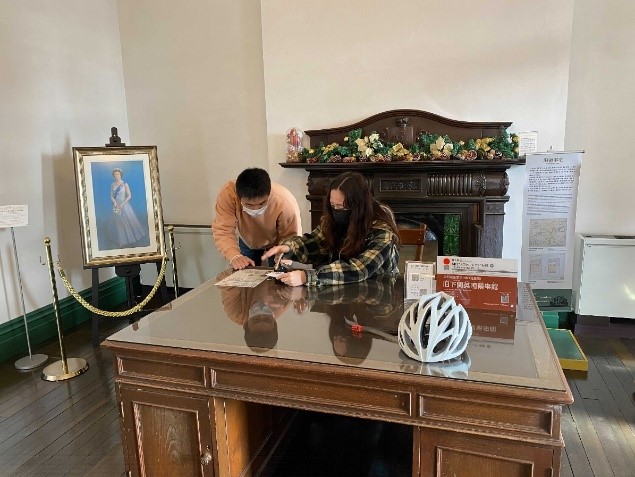
| Former British Consulate in Shimonoseki | |
|---|---|
| Usage Fee | Free |
| Opening hours | 9:00 A.M.-5:00 P.M. |
| Phone number | 083-235-1906 |
| Official HP | http://www.kyu-eikoku-ryoujikan.com/english/ |
| Regular hours | Every Tuesday / New year holiday season |
Ⓒ『Karato Market』
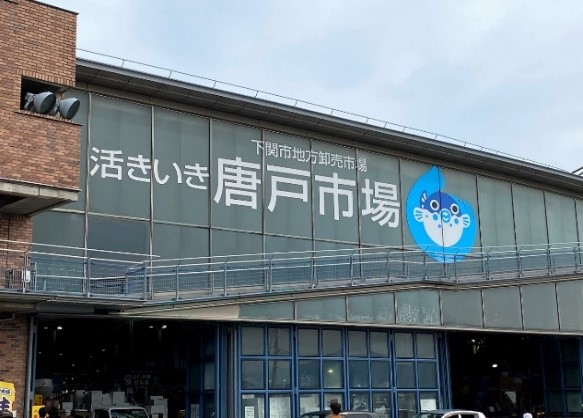
Next, we visited the Karato Market. In addition to fish caught in the Shimonoseki, many fish from other regions are gathered. In addition to wholesaling fish selling whole fish at wholesale prices. The market also sells sushi and fried food, making it a popular spot for young people and foreign tourists. Especially on Fridays, Saturdays, Sundays, and holidays, a food and drink event called ikiki Bakan gai (Lively Bakan Street) is held. Bakan is another name for Shimonoseki.
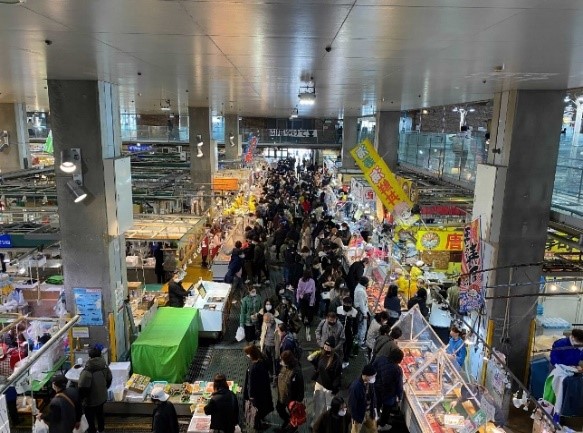
We bought our lunch at Karato Market. Many stores are lined up here, and each store allows you to choose what kind of sushi you want to eat. Cash is the primary payment method, but some restaurants also accept electronic money.
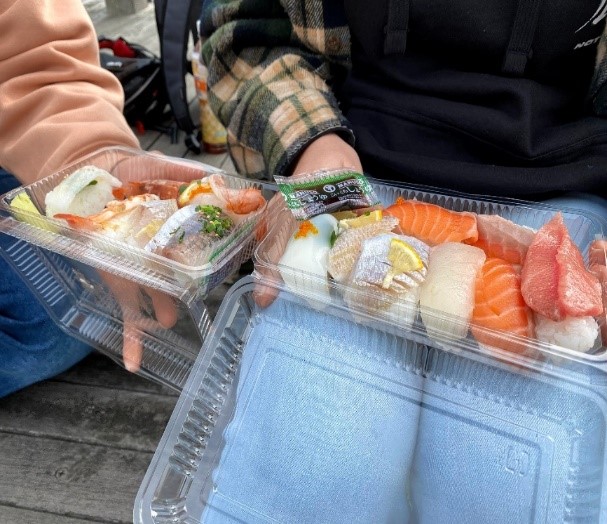
Tuna (Maguro), salmon (Salmon), squid (Ika), horse mackerel (Aji), shrimp (Ebi) ……
We had a lot of sushi!
All of the ingredients were large, fresh, and satisfying.
Jessica said that she loves sushi, especially salmon.

This time, one of our members had a bowl of Kaisen-don (seafood rice bowl), as shown in the photo on the left.
It is a dish of vinegared rice topped with variety of sashimis. Kaisen-don is recommended for those who want to eat different kinds of ingredients at once!
Be sure to find your favorite dish here. Karato Market is an excellent spot for sushi lovers.
| Karato Market | |
|---|---|
| Market Opening Hours | Monday~Saturday 5:00 A.M.-3:00 P.M./ Sunday・Holidays 8:00 A.M.-3:00 P.M. |
| Weekend Food and Beverage Event | Friday・Saturday 10:00 A.M.-3:00 P.M./ Sunday・Holidays 8:00 A.M.-3:00 P.M. |
| Phone number | 083-231-0001 |
| Official HP | http://www.karatoichiba.com/ |
Ⓓ『Akama Shrine』
Next, we went to Akama Shrine, where Emperor Antoku is enshrined. Emperor Antoku died at the age of only eight in the Battle of Dannoura. The Battle of Dannoura was the final battle between the Minamoto and Heike clans in 1185.
This place is also the setting for a ghost story called “Mimi nashi Hoichi.” You can find the details of this story below. Every year on July 15th, a festival called Mimi nashi Hoichi Festival is held, with rituals and biwa performances in front of the graves of Hoichi and the Heike clan.
The main attraction is the Suitenmon gate at the entrance. The two colors, red and white, make it stand out.

Miminashi Hoichi
n a temple, there was a blind biwa master called Hoichi. He was very good at playing the biwa, and no one could beat him, especially at playing the Battle of Dannoura. One night, while he was playing his biwa in the temple, a ghost of an armored warrior walked by. The ghost enjoyed his performance and ordered him to play at the ghost’s house every night.
Since Hoichi was blind, he did not think that the voice was coming from a ghost. Hoichi was happy that his performance was praised and gladly accepted. The next day, he started to sneak out of the temple at night to visit the ghosts and perform without telling anyone. From that day on, Hoichi’s health gradually weakened. The monk became worried and decided to keep an eye on Hoichi. The monk found out that Hoichi played his biwa every night in front of Emperor Antoku’s grave. The monk realized that a ghost possesses Hoichi, so he told Hoichi the truth and wrote sutras all over his body so that the ghost could not see him. That evening, when Hoichi, who always came to perform, did not show up, the ghost came to pick him up. As expected, however, the ghost could not see Hoichi. As he looked for him, he noticed only an ear. The monk had forgotten to write a sutra in Hoichi’s ear, and only his ear was visible to the ghost. The ghost tore off the ear and took it home with him. The next day, when the monk saw Hoichi without his ear, he felt sorry for him and quickly took care of him. Hoichi was never haunted by ghosts again, and his biwa became even more popular.
※Translated into English from the following sources:※
(1)耳なし芳一. (n.d.). まんが日本昔ばなし〜データベース〜 – 1975年〜1994年、TBS系列で放送されたTVアニメ「まんが日本昔ばなし」の全話総まとめ、全話あらすじデータベースです。
http://nihon.syoukoukai.com/modules/stories/index.php?lid=67
(2)NHK. (n.d.). 【コワイオハナシノクニ】耳なし芳一(ほういち) | おはなしのくに | NHK for school. NHK for School.
https://www2.nhk.or.jp/school/movie/bangumi.cgi?das_id=D0005150532_00000
The photo on the right shows the main shrine. After worshipping, we went to buy an omikuji (fortune paper). The explanation of Omikuji is below.
Jessica got “Daikichi” and best luck! It’s not good to be overly happy or sad about omikuji, but it’s still lovely to get good luck. I hope you will try it too.
This shrine is not only beautiful, but it also has a sad history and anecdotes behind it, which makes me love it even more.
Jessica said that Akama Shrine was the most memorable part of this cycling trip. She made a wish to get healthier life.
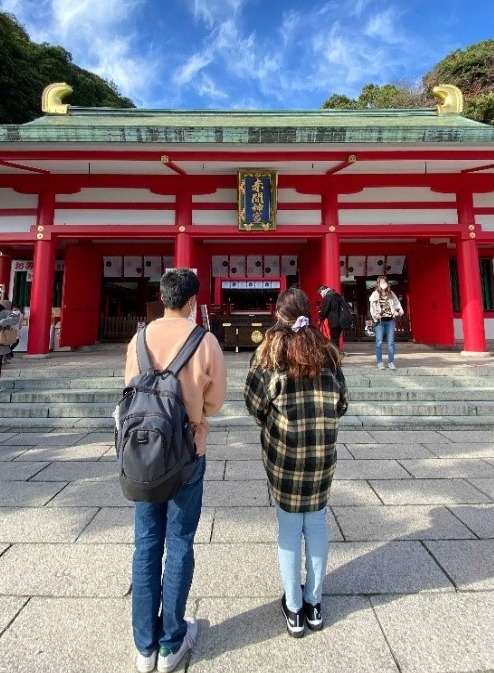
Bits of knowledge ― Omikuji ―
Omikuji is generally considered to be a fortune telling tool. At shrines, you pay money and choose one of the lots in a box to draw to see your fortune. It contains good or bad luck and details about money, work, love, etc. The format differs from shrine to shrine.
In the past, omikuji in Japan was used to listen to the opinions of the gods. The views of the gods were used to make important decisions about the country’s politics and other matters.

The omikuji is drawn after you have prayed.
After you have removed the omikuji, check your fortune. The order of fortune is “大吉(great luck), 吉(good luck),中吉(middle luck), 小吉(little luck), 末吉(last luck), and 凶(bad luck).
The result of the fortune is important, but the advice written at the end is also enjoyable.
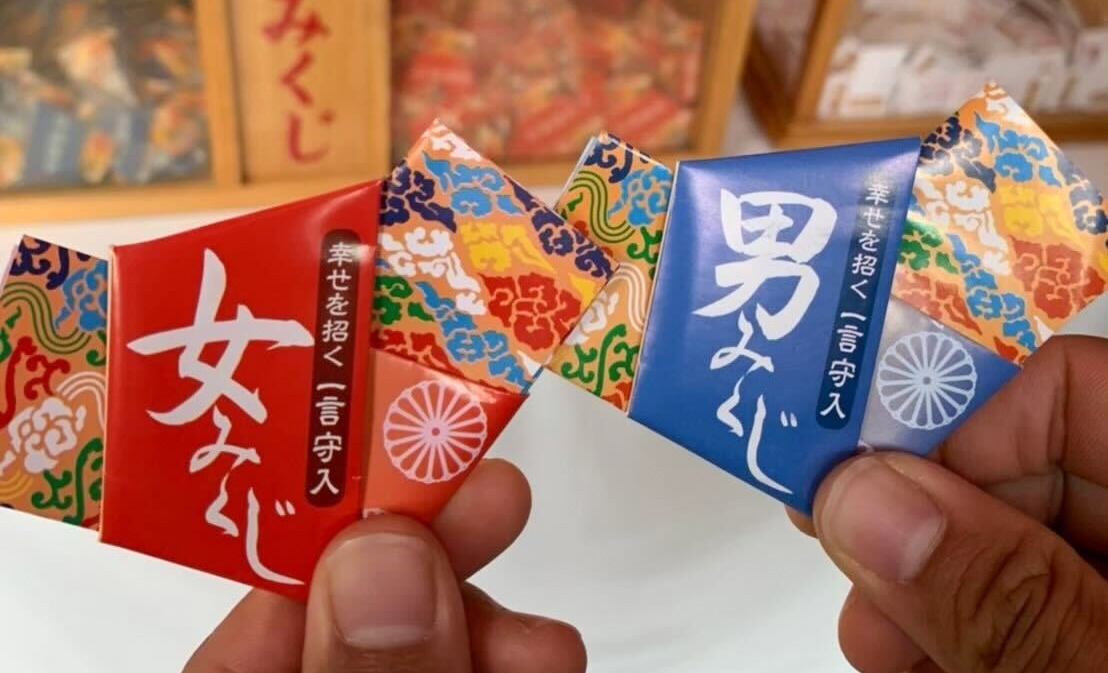
| Akama Shrine | |
|---|---|
| Opening hours | 9:00 A.M.-5:00 P.M. |
| Usage Fee | Free |
| Phone number | 083-231-4138 |
| Official HP | http://www.tiki.ne.jp/~akama-jingu/ |
Ⓔ『Mimosusogawa Park』
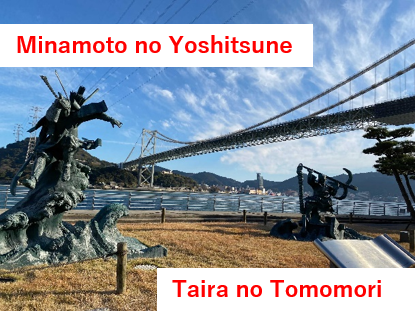
We arrived at the last spot of the trip, Mimosusogawa Park. This park is said to have originated from a poem written by Nii no ama (Taira no Tokiko), 今ぞ知る 身もすそ川の 御ながれ 波の下にもみやこありとは(Now I know that there is a Miyako under the waves of the Mimosuso River). The poem was written to Emperor Antoku, and it is said to have the following meaning: You, with the blood of the Heike family flowing in your veins, would know that there is a capital under this wave, which is fed by the Isuzu River (also known as the Mimosuso River) in Ise, which is closely related to the Heike family.
This is the place where the Battle of Dannoura took place. In the park, there are bronze statues representing Minamoto no Yoshitsune’s “Hassou Tobi” and Taira no Tomomori’s “Ikarikazuki.” They are the two prominent figures in this battle. Hasou Tobi refers to how Yoshitsune jumped from one ship to another at sea. Ikarikazuki refers to the scene of Taira no Tomomori entering the water carrying an anchor on his body.
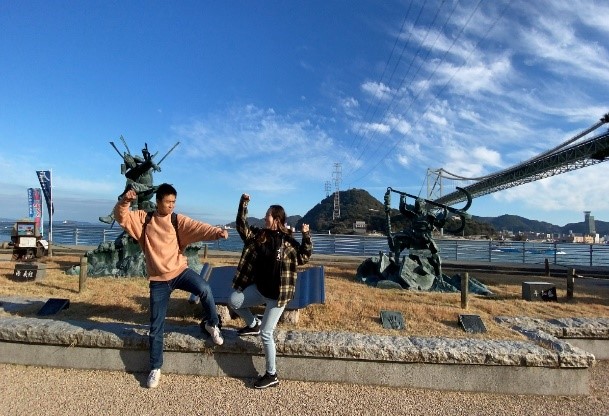
We took a commemorative picture by imitating the movements of the statue.
Why don’t you take a picture with the Kanmon Straits in the background like in this picture?
By the way, the opposite shore in the photo’s background is Fukuoka Prefecture. It’s so close, that if you shout at the other side of the strait, your voice will almost reach it.
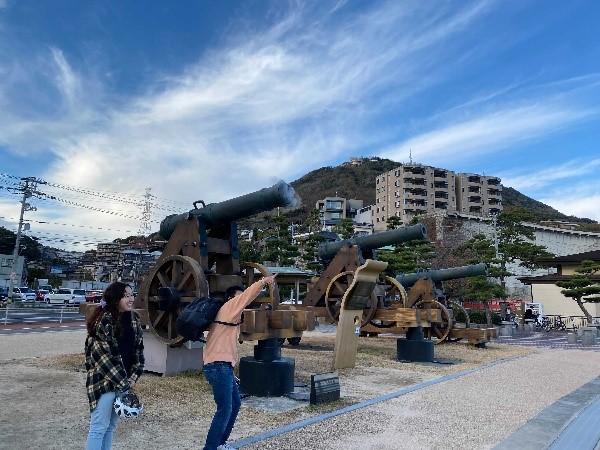
And here, a replica of the “Choshu cannon (80-pounder Kano cannon)” used in the 1864 bombardment of Shimonoseki by the Shikoku Fleet is installed.
This incident was between the Choshu clan, which had jurisdiction over Shimonoseki, and the allied forces of Britain, the United States, France, and the Netherlands.
For 100 yen, you can experience what it feels like to shoot a cannon, so why don’t you try it?
In the end ……
On this cycling course, you can enjoy the food of Shimonoseki City and learn about the history associated with each of the sights. All the spots introduced are located within a short distance. If you ever stop by Shimonoseki City, let’s go sightseeing by bicycle!
Traffic Manners
Here is a summary of the seven manners introduced in the video. There is a lot of traffic in the city, so please follow the manners and enjoy cycling safely.
No.1 When there are people on the sidewalk, please push your bike.
Sidewalks are for pedestrian traffic.
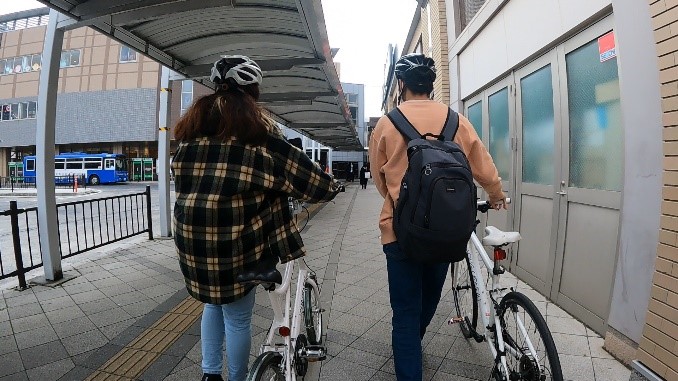
No.2 Wear a helmet
To reduce the impact on your head when falling while riding a bicycle.

No.3 Riding on the left
In Japan, the basic rule is to drive on the left side of the road.
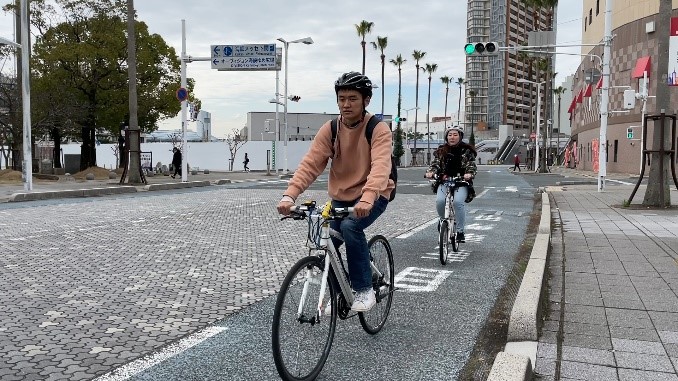
No.4 Push your bike and walk at crosswalks.
Crosswalks are dangerous due to the heavy pedestrian traffic.
〈When crossing the sidewalk as a pedestrian〉
- Bicycles must be pushed across.
- Bicycles may be ridden when no one is riding.
〈When riding on the roadway〉
- Make a two-step right turn (see diagram below right)
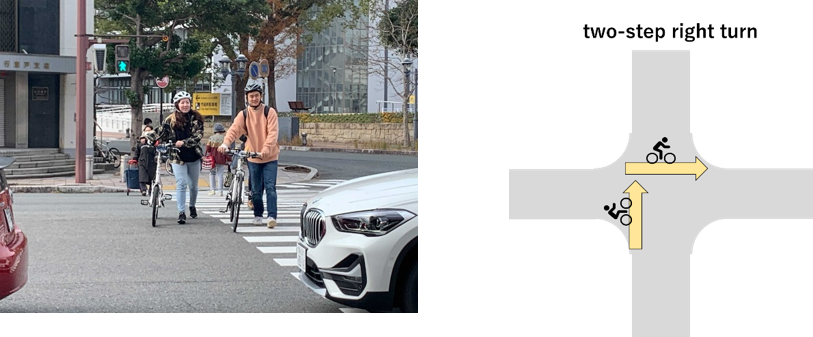
No.5 Lock up your bicycle when you park it.
To prevent theft.

No.6 Riding on the bike path
To allow pedestrians to walk safely on the sidewalk.
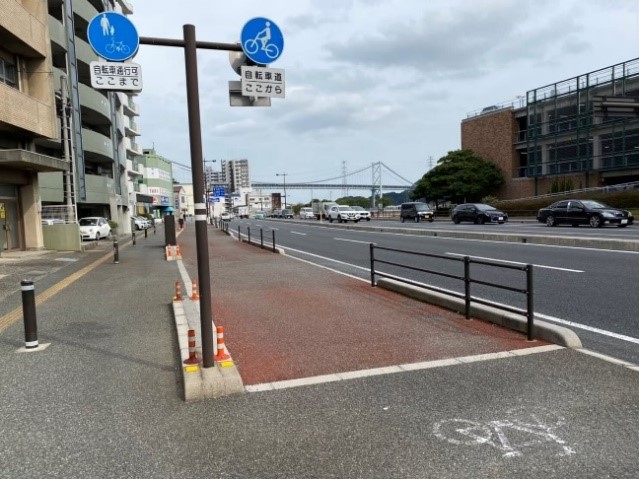
No.7 Follow the signs (push your bike, walk)
Because the road is narrow and pedestrians pass through.
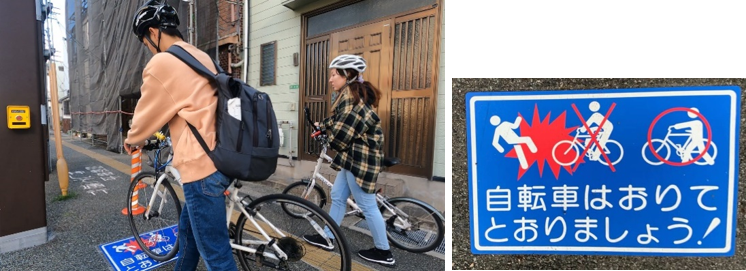
Unreleased video information
Kanmon Pedestrian Tunnel
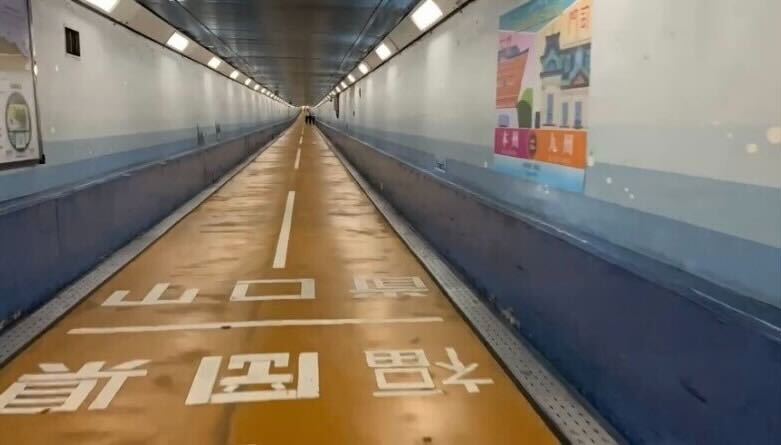
his undersea tunnel connects Shimonoseki in Yamaguchi Prefecture with Moji in Fukuoka Prefecture. It takes about 15 minutes on foot to get to Moji.
This humanitarian road is recognized as a national road, and many tourists and residents visit.
You can even push your bike across it!
(A fee of 20 yen will be charged).
| Kanmon Pedestrian Tunnel | |
|---|---|
| Fee | Free on foot / Toll for bicycles and motorcycles less than 20 cc: 20 yen |
| Opening hours | 6:00 A.M. -10:00 P.M. | Holidays | No Holidays |
Nagato no Kuni Ichinomiya Sumiyoshi Shrine
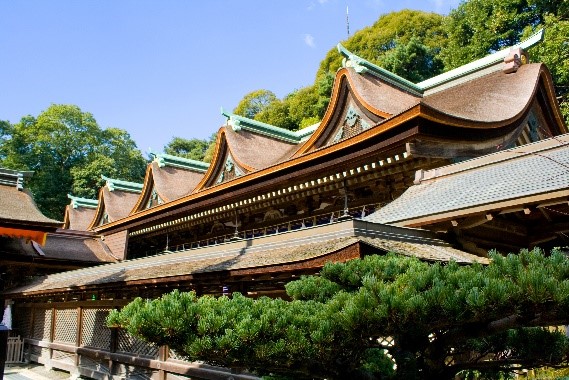
Nagato no Kuni Ichinomiya Sumiyoshi Shrine is one of the three major Sumiyoshi shrines in Japan, along with Sumiyoshi Taisha Shrine in Osaka and Sumiyoshi Shrine in Fukuoka. This shrine was built in 200 and has a very long history. It is a shrine with a very long history. The main shrine was rebuilt in 1370 and is designated as a national treasure. The main hall was rebuilt in 1370 and is defined as a national treasure. It is built in a rare architectural style in Japan called Kyugenshanagarezukuri. I highly recommend that everyone visit this place.
| Nagato no Kuni Ichinomiya Sumiyoshi Shrine | |
|---|---|
| Opening hours | 6:00 A.M.-6:00 P.M.(October – March 5:30 P.M.) |
| Fee | Churchyard is Free | Holidays | No holidays (December 8~15th Not available for worship due to the Shinto ritual) |
The End